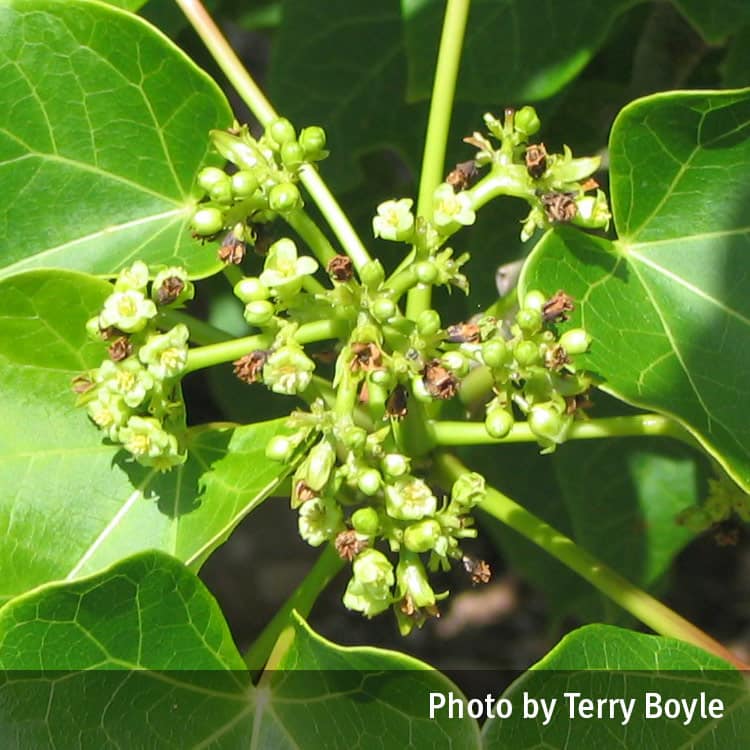Warning
For all ingestions seek urgent medical assistance.
Description
A deciduous small tree or large shrub sometimes grown as an ornamental.
The flowers are small, green yellow to yellow white in colour. Flowering season is spring to summer.
The leaves are heart-shaped, up to 15cm wide and held on long stalks. The leaf margins are indented or 3 to 5-lobed, with 3 to 5 veins radiating out from the leaf base.
Toxicity
Symptoms
The seeds are poisonous, and if ingested, can cause acute abdominal pain and a burning sensation in the throat, followed by vomiting and diarrhoea. Flushed skin, dilated pupils, dry skin and mouth and increased heart rate may occur. The sap may cause contact dermatitis and eye inflammation.
Images


Details
Common name: Physic nut
Botanical name: Jatropha curcas
Other common names: Purge nut, Curcas bean, Barbados nut
Family: Euphorbiaceae
General description: A deciduous small tree or large shrub sometimes grown as an ornamental.
Flowers: The flowers are small, green yellow to yellow white in colour. Flowering season is spring to summer.
Leaves: The leaves are heart-shaped, up to 15cm wide and held on long stalks. The leaf margins are indented or 3 to 5-lobed, with 3 to 5 veins radiating out from the leaf base.
Fruit/Berries: The fruit are 2.5 to 4cm long, oval in shape, green and fleshy when immature ripening to dark brown. The ripe fruit splits open to release 2 to 3 black seeds that are about 2cm long.
Other: The sap is copious, clear and watery, and may cause contact dermatitis and eye inflammation.